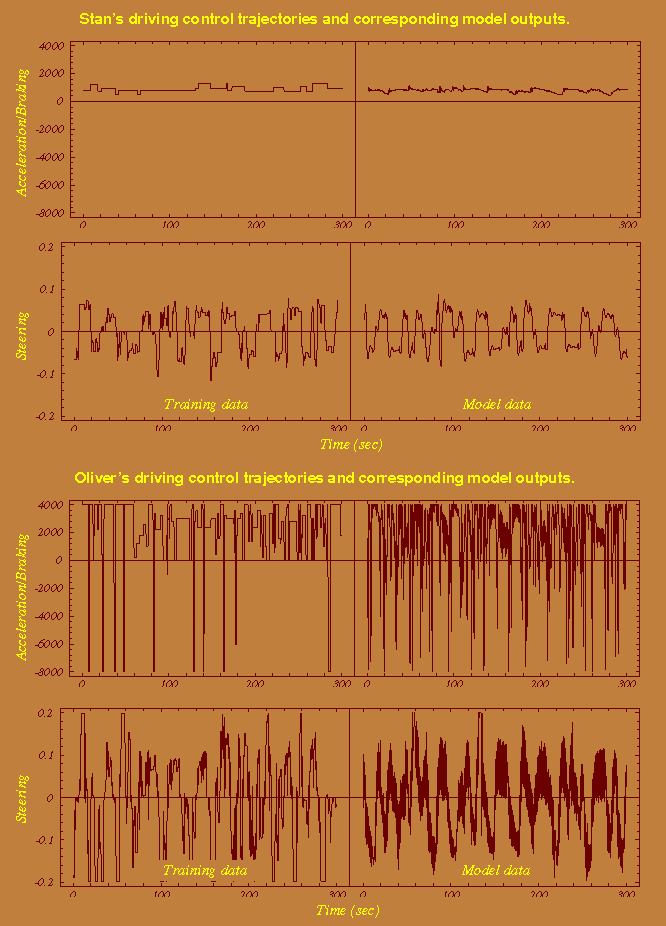We collected data from two human operators, Stan and Oliver, in a driving simulator. For each individual we
train a simple HCS model using cascade neural
networks. The resulting source and model trajectories are shown
below, along with the corresponding similarity measures.


The similarity results confirm two qualitative assessments of the
data. First, we observe that the two driving styles are objectively
quite different. This fact is reflected in the low similarity measures
between one individual's model and the other individual's source and
model-generated data. Second, Stan's model is a better reflection of
his driving style, than Oliver's model is of his, as reflected in the
two respective similarity measures, 0.911 and 0.487. This is
indicative that Oliver's sharply discontinuous driving strategy is
more difficult to learn by a single cascade network than Stan's calmer
approach. Indeed, Oliver's model generates significant oscillatory
behavior, of which Oliver himself is not guilty. Finally, we note
that the similarity measure serves a dual purpose in the context of
human control strategy. It not only serves to validate HCS models, but
also can compare and contrast control strategies of different
individuals. For this example, it is qualitatively apparent that the
driving strategies are quite different. Consequently, the similarity
measure evaluates to very small values across individuals.

Back to human control strategy page.
Last updated January 15, 1995 by Michael C. Nechyba



